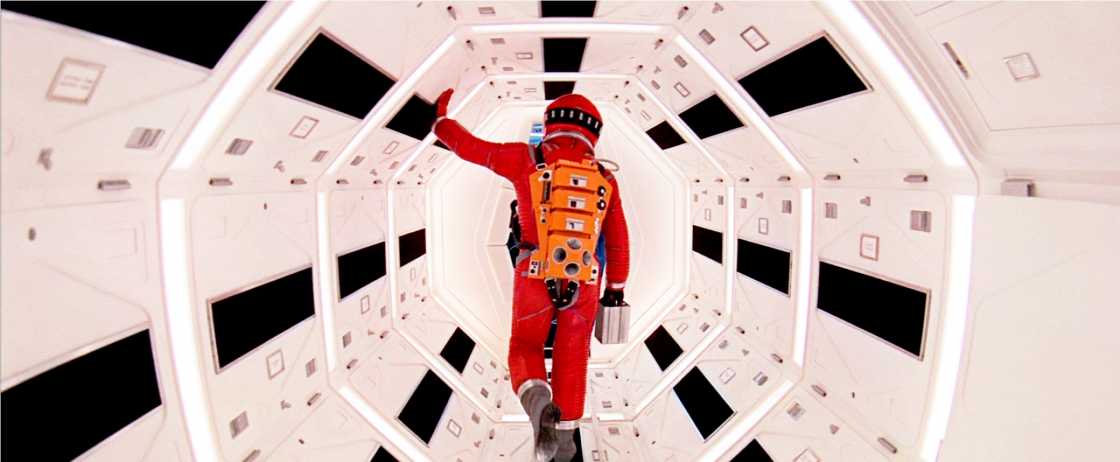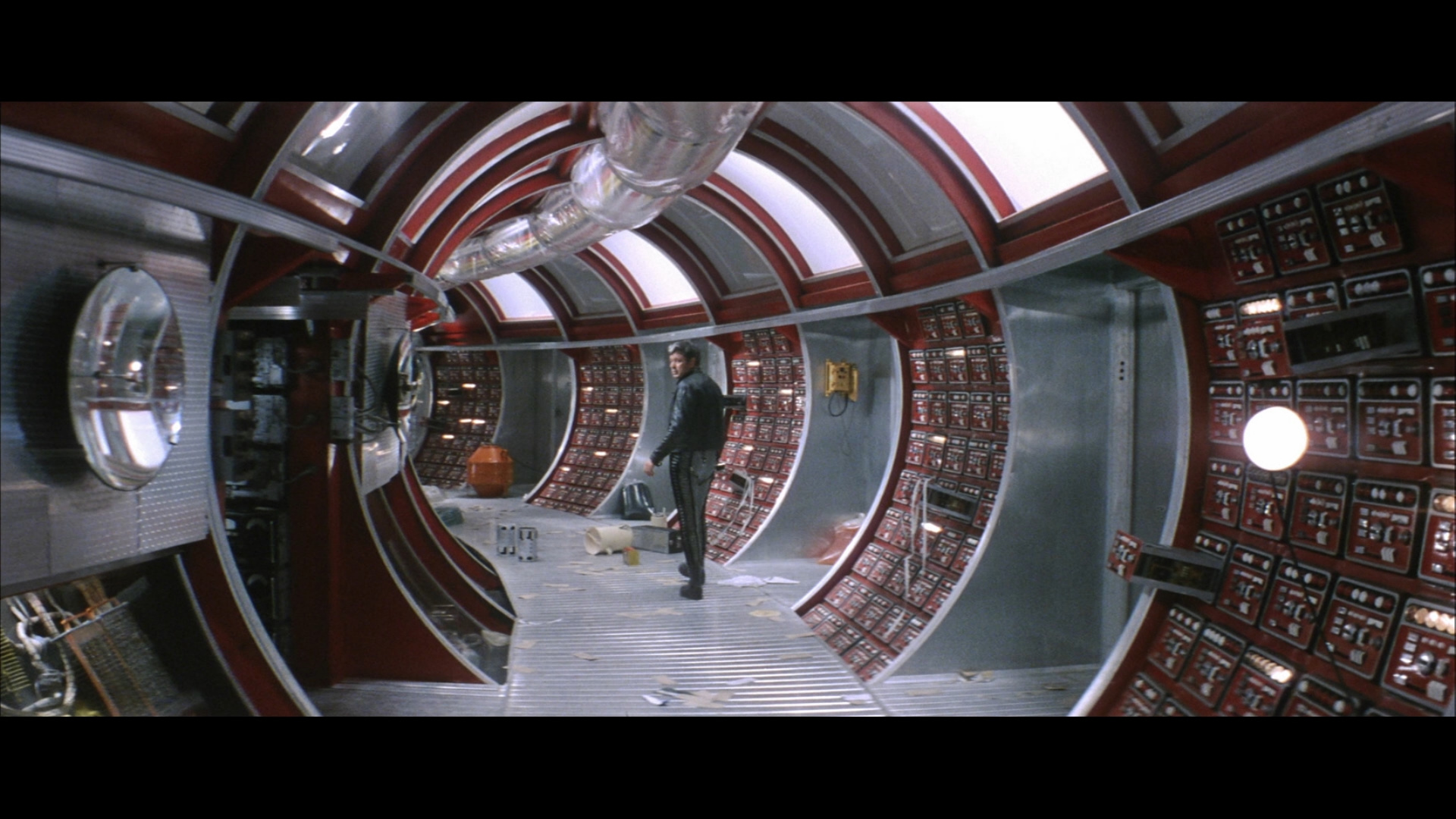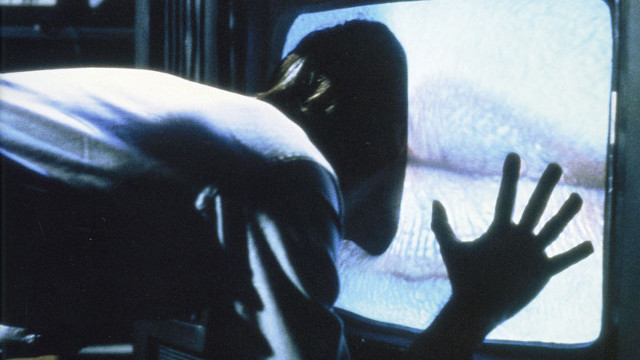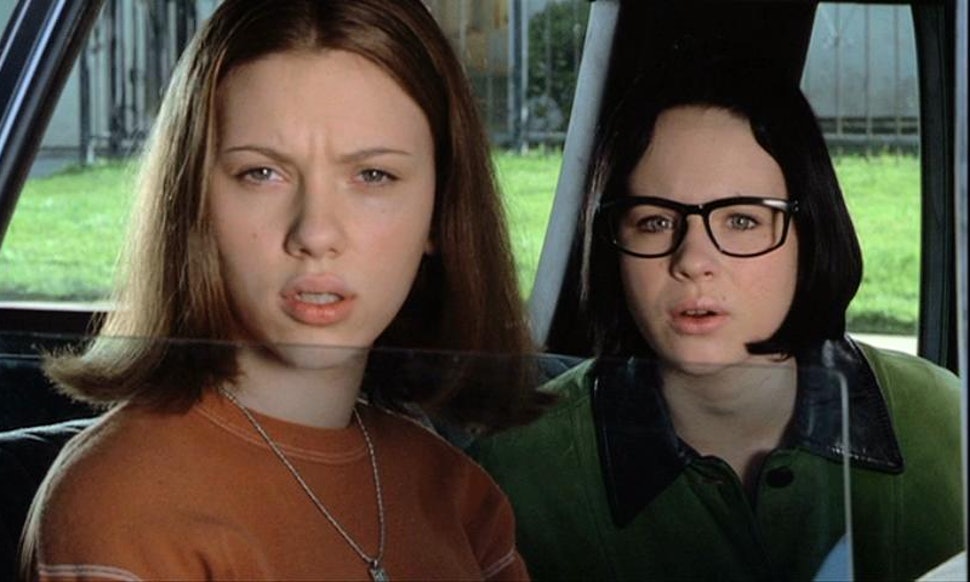2001 in 2018

I miss my mommy and daddy. I want to go home. I have lived out of the house for over a decade now, but I miss it. I miss watching Batman: The Animated Series on a 10 by 10 inch cathode ray, eating ritz crackers, sitting cross legged or on my belly on our beige Nylon carpet. I miss Midtown Video on Middlefield Road. I miss VHS.
The discovery of great film was a big part of my upbringing and, for better or worse, my intellect during my teen years should rightfully be credited to Midtown Video in Palo Alto, California (sadly, they closed shop in 2004). The movie that kicked off the never ending binge was Terry Gilliam’s sci-fi thriller, “12 Monkeys”, where I learned one could get away with style over substance as long as both were present. However, the first truly challenging film I enjoyed was “Stanley Kubrick’s 2001: A Space Odyssey”.
After watching it once, I watched it again a week later. Then again. But always by myself. Convincing anybody to watch this movie was and remains a struggle. I tried to convince my brother (14 years old at the time) to watch it. At 15 minutes in, not a single line of dialog had been spoken, the only characters were a bunch of loud apes in the savannah, and my brother was pretty sure we had the wrong cassette. At 20 minutes the apes were howling at a black rectangle (referred to as “the monolith”) while avant-garde orchestral music blasted on the soundtrack. I was surprised to hear no complaint from my brother at this point. But he couldn’t complain. He had walked out of the room 5 minutes ago.
I love 2001, but I can’t blame people for hating it, just as I am sure opera is great for some people, but I don’t feel obligated to enjoy it myself. It’s clear that Kubrick wanted 2001 to be some sort of opera. The Blue Danube, Ligetti, there is even an intermission. The first shot, after 2 minutes of dissonant flute noises in the dark, is a shot above the moon with the earth and sun aligned in the distance to the sound of Strauss’s “Also Sprake Zarathustra”. Everything about the movie carries weight. But, where does this weight come from? While the film may feel grand and intimidating, interpreting 2001 is actually quite easy to do. The film aggressively refuses to claim any one interpretation as “correct”, and in so doing, opens the door to virtually anything an active viewer wishes to bring to the table. This is where the weight comes from. The film is a religious film, a story about our position relative to god, not unlike the Bible which is also criticized for its pacing. Full of stories, which may be truly meaningless, and of a time long forgotten, but that lives on because the stories feel as if they have meaning, and if they feel like they have meaning we feel compelled to find meaning. In our search to find meaning we will ultimately come up with something, and snap. From water to wine, we obtain meaning.
In our godless era I feel safe in coming out as a devout atheist. I don’t know for a fact there is no God, but you gotta have faith. I do not believe in a single all powerful force in the universe. I believe in three or four:
- the electro-magnetic force
- the strong nuclear force
- the weak nuclear force
- and gravity (maybe)
All dynamics, the motion of planets, to the rise and fall of the Roman Empire, follow as corollaries. As a result, there is no such thing as free will, we are slaves to the whims of quarks and thermodynamics. Emerging from the heat-bath of evolution, it is merely to the benefit of survival of the species that we believe in free will (fallaciously). We may act as if we have free will, going about our day as creatures with intent. Most of my thoughts are not brimming with intent though. I’m thinking about how I can make dinner using what’s in my fridge (beets/mayonnaise/left-over rice from Chinese take-out). During these mundane moments, the subconscious is running cron jobs, keeping alive a semi-awareness of the fact that something else is pulling the strings, and this feeling beneath the surface is what compels us to believe in a higher entity, a god. Of course I act as if I have free will. I don’t have a choice (literally, no choice).
It is in this sense that the HAL 9000 supercomputer emerges as the most emotional creature in the entire movie. HAL plays games, and asserts his own consciousness and sense of pride
We are fool proof and incapable of error. I am putting myself to the fullest possible use, which is all any conscious entity can ever hope to do. -The HAL 9000 computer
In HAL, man has created a god. Or so we think. When HAL makes an error diagnosing a failed module on the ship, the crew members, David Bowman and Frank Poole, secretly decide to disconnect HAL, but disabling all his higher brain functions, leaving only the most basic functions required to run ship. The death scene of HAL is one of the most poignant deaths in cinema. David Bowman enters HAL’s memory bank and begins to shut-down pieces one at a time over the course of 5 minutes. As he does this HAL tells him
My mind is going. I can feel it. I can feel it. I’m afraid. I’m afraid. Please stop Dave. Stop. Stop.
We’ve killed a god of our own creation. This is where the movie loses its sense of restraint. All that’s left is David Bowman, and the monolith. There’s nobody watching to make sure nothing gets out of control. David enters the monolith, and the viewer is treated to a disturbing trip: through neon corridors, viscous blue fog, a room designed by Louis XIV, lit below by fluorescent lights, David Bowman literally watches himself grow old and breath his last breath, before transforming into a massive baby (the star child), and the movie ends with a giant baby floating above Jupiter while “Also Sprach Zarathustra” blasts on the soundtrack. Quick fade to black. Pause.
Written and Directed by Stanley Kubrick.
Watching 2001 in 2018, was more than a trip. This year is the 50th anniversary of the film, which is being re-released in a restored version at Cannes, and subsequently worldwide. In other words, 2001 came out in 1968, the year of America’s cultural revolution: Vietnam, the riots at the DNC, the assassination of Robert Kennedy, Martin Luther King Jr, The electric Kool-Aid Acid Test. With 20-20 hindsight, it is difficult to simulate the feeling of that time, but 2018 AD exhibits an alienness which is both exciting and terrifying and perhaps resembles that revolutionary feeling that something was in the air. A number of my friends who voted for Trump still do not regret their decision to do so, but all of them readily admit that we have entered the monolith. I still can’t understand why some of my friends voted for Trump and how anybody can put this man in power of anything, but I can see that there is a logic to it. This is not normal, and that is the point. For many Trump voters, electing Clinton would be to elect a the self-perpetuating (yet non-living?) capito-polital-intelligence complex that had brought us a crony-capitalist America in decline. Thwarting Clinton was to bring down a god we never intended to create. After the election every subsequent event had the semblance of… Ah fuck, I’m writing another essay on [SOMETHING] in the age of Trump. I promised myself I wouldn’t do this. Fuck it. I’ll try again. Eject.
Solaris (Tarkovsky)

“Solaris” is another philosophical space film that explores the paradoxical awesomeness and cool indifference of the universe; similar, but stranger, and therefore less viewed than “2001: A Space Odyssey”. A quick synopsis: The title of the film, “Solaris”, refers to a planet covered by sludge. This sludge reveals itself as a very large sentient entity, but its intentions and being are as clear as the notion of sentience itself.
The main character, Kris Kelvin, is a psychologist sent to determine what went wrong on a space station hovering over Solaris. He boards the ship to find the crew inexplicably hermetic and rude. Their misanthropy is justified however, as the planet apparently manufactures apparitions based on our most powerful (yet suppressed) memories. When you start seeing past loved ones who are long dead, it is hard to trust your senses and anybody who appears aboard the ship. Even worse, the apparitions do not realize that they are freshly minted from the sludge on the planet below. After Kris Kelvin kills the first apparition by ejecting her from the space station, she appears again. As the viewer, we quickly enter the same mental space as the protagonist. Why is the sludge messing with people’s heads? Does the apparition really feel pain, or does it (she?) merely act the part? How does the sludge know exactly what buttons to press without having ever encountered humans until now?
Science fiction almost always assumes the aliens we meet play some kind of game with us the rules of which we sooner or later may understand (in most cases the “game” was the strategy of warfare). However I wanted to cut all threads leading to the personification of the Creature, i.e. the Solarian Ocean, so that the contact could not follow the human, interpersonal pattern - although it did take place in some strange manner. -Stanislaw Lem, link
The author of the novel upon which the film is based, Stanislaw Lem, never held the film in high regard, and refused to watch Steven Soderbergh’s 2007 re-adaptation as well. Which is a shame, because both Tarkovsky’s film and Soderbergh’s are good films which to me exhibited great respect for the novel. The likely reason is that of an author blinded by his love for his creation. While the novel dwelled on the philosophical implications of meeting an entity that doesn’t understand us, and the tendency of humans to project themselves on everything, the movie went less heavy on philosophy, but deep in depicting the human struggle to cope with a universe that abuses our senses without understanding our pain. After all, it’s a movie. At the same time, the most accessible tidbits of philosophy did make it into the movie, and I think they are the most thought-provoking as well. Before Kris Kelvin’s departure to Solaris, he views the transcript of a captain, who went mad while living on the space station above Solaris. This captain fell into the Solarian ocean, and there he saw a massive yet entirely authentic baby (yes another baby floating in space). Tarkovsky made the wise decision not to depict the baby and instead harness the curiosity of the viewer to conjure an eeriness no filmmaker could recreate on any budget. The baby is a metaphor for our relationship to the universe, always asking the universe “what are you trying to tell me?”, when the universe has no such intentions, it’s hungry and people are merely talking toys.
Why do we project ourselves onto every conscious entity? Hell, even non-conscious ones like teddy bears. Perhaps the first step to understanding is to put ourselves in the place of the thing which we are exploring, and this first attempt immediately allows us to fool ourselves into a search for a logic that does not exist. It still baffles me that the religious right has decided to back the very embodiment of hedonistic nihilism, and perhaps because I’m not understanding what it means to understand this administration. It is an administration that reacts to what we throw at it without intention, just as the Solarian ocean taunts the scientists who orbit its surface not out of intention, but just because. We ask for our election to be a high-stakes version of pay-per-view wrestling, and we ask that our politicians be less fake, and the system conjures these desires in a physical form like apparitions from the Solarian sludge. For all the firings, and tweets, and contradicting statements with staff members, our attempt to understand the Trump administration might be much simpler if we didn’t proceed with the assumption that the actions we witness are anything more than reactions to a reaction to a reaction, with no rhyme or reason, no inner soul, just emptiness. This administration, like the Solarian sea, takes what we ask of it and reacts theatrically in order to prime the next news cycle and continue the existence of the goop. However, for most of us, it is not just a game of “how far can the curling stone glide?”. For the people who pay the consequences of a gutted environmental policy, a diminished international standing, a…. fuck, I did it again. God damnit. Let’s get down to earth.
Videodrome

Before Ray Kurzweil and the transhumanists, there was Brian O’Blivion and “Videodrome”. Directed by Cronenberg in his prime, the film follows Max Renn, a TV executive for a smutty UHF TV station in Toronto. The “enter the monolith” moment happens very early in the film when an engineer working for Max Renn shows him a video broadcast, ostensibly obtained by intercepting signals emitted from Malaysia. The broadcast appears to depict a surreal snuff flick; a large orange room with clay walls where a young lady is tortured and killed. Upon viewing the tape Max Renn makes the foolish decision to broadcast it. His engineer finds out the signal of the original broadcast is not from Malaysia, but is from Pittsburgh. One thing leads to another, and Max Renn is continues down a lengthy rabbit hole of body-horror hallucinations, sadomasochistic sex, and a futurist cult that asserts humanity will abandon their flesh-bound selves in exchange for an existence solely in video, the videodrome.
long live the new flesh. -Brian O’Blivion
Like the apparitions on Solaris, it’s unclear what is real, and the notion of the self is deconstructed in videodrome. The video broadcasts in the movie are actually programs which manipulate the viewer into performing missions for one side or the other in some underground battle over North America. While the symbolism may seem painfully loud when written here in text form, one does not feel beaten over the head with it when watching the film. Perhaps this is because the film is first and foremost a gore flick. While it oozes 80s cyber-punky-horror, viewing the film in 2015, I thought it aged quite well perhaps as a result of its pertinence to my present situation. At the time my son was 4 months old and, like many new parents, my perspective on the future shifted. We should be worried about the influence of advertising and easy TV on not only children, but ourselves. The auto-play setting and the recommended playlist are dangerous. Our desires control us, and media allows others to tap into our interface and monetize our controllability. We may react to what we see, which momentarily gives us the illusion of control, but it’s a reaction, and the stimulus is what wields real power. The new flesh is already alive an well today. Twitter and all the other social media platforms have created a new space where battles of idea with potentially no bound to physical reality take place. Perhaps this is the mad genius of the post-truth era, if there is any… and blah blah blah, something something, Trump. FML.
Let’s try something less intense.
Ghost World

Based on the comic book by Daniel Clowes, the film depicts a romanticized version of late teenage rebellion against the standard human pipeline of school to college to employment to marriage to children to school. In the opening shot we pass suburbia of the late 90s at twilight hour before peaking in the bedroom window of Enid, a thick spectacled high-school outcast, as she dances to 1960s Bollywood while wearing her red cap and gown. The next scene we see Enid and her friend rolling there eyes at a very lame graduation speech, before exiting the auditorium and giving their school the finger.
I first watched this movie at age 17, the same age of Enid, and I fell in love with her. I remember it felt as if she knew something we all knew, but she had the bravery to live it. The 17 years of gold stars, track meets, and gifted and talented programs were nothing but a massive brainwash. Society only needs a few successes out of hundreds to keep the economy chugging, and so we can just throw children randomly at the employability dart board. This is known by physicists as a Monte Carlo method, and is one of the most generic search and integration algorithms available. At age 18, I had the fear that I was merely a particle in the Monte Carlo algorithm, but I suppressed it for the sake of sanity. In fact I had gone the opposite direction, and decided to major in film with the ambition of becoming a successful Hollywood writer director. This is a life plan where the math is not in your favor, and virtually all the darts end up falling to the floor. I was only able to ignore this math for a year before dropping out of film school and switching majors. I became a math major.
Kids who refuse to be cogs within the algorithm, such as Enid, are of no use to society, and the movie ends with Enid leaving town on a ghost bus. Had the story continued, ten years later, Enid would be a full grown adult reading Malcolm Harris’s “Kids These Days”, a non-fiction peace which predicts a society at its end, where the prison population grows in proportion to an ever rising unemployment rate, fueled by the very innovation which we were told is vital to the economy. Children are bonds with maturation dates, and the since each technological change is perpetually reinvested for further growth, we never cash in on the rise in per-capita productivity. Here, a fascist presidency is merely the beginning. If we don’t learn to wean ourselves off our addiction to growth, we will perish once the growth stops. By perish, I mean we will cease to be a society with humanist moral values.
Fuck! Did it again, three strikes. I give up. Time to bring out the big guns.
The Emoji Movie

Nearly thirty years ago we were introduced to the most dignified captain to ever lead a Federation crew, Jean-Luc Picard of the Starship Enterprise, as played by Patrick Stewart. An actor who, along with Ian McKellen and Kenneth Branagh, deserve much of the credit for introducing children of my generation to Shakespeare. Little did we know in the early 90s that thirty years later, Patrick Stewart would move on to do even more amazing things. In “The Emoji Movie”, Patrick Stewart plays the part of a turd. Just to clarify, there is no metaphor here, Patrick Stewart acted the part of a literal piece of poop. How he managed to get into the head-space of a pile of shit is beyond the scope of Stanislavski or Meisner. Truly a remarkable feet that can not be overstated. Despite terrible review (8% on Rotten Tomatoes) the “Emoji Movie” was second in the box office on its opening week. A clear signal that the critics got this one wrong. The movie at the top that week was “Dunkirk”, directed by Christopher Nolan. (Incidentally, Christopher Nolan played a large role in the re-release of 2001 at Cannes). “The Emoji Movie” grossed $217 million at the box office with a budget of 51 million. These are big numbers and, taking a page out of Richard Feynmann’s playbook, I feel compelled to provide a sense of scale. For instance, the engine of federally funded scientific graduate research, the NSF graduate research fellowship, is 250 million. Thus, one emoji movie is roughly five years of federally subsidized research in the US. “The Emoji Movie” made a 5x return on its investment over the course of one year. It is doubtful that we can project even a 2x return on the NSF graduate research fellowship in a single year.
I propose we amend the budget and slash the NSF graduate research fellowship in place of a more lucrative investment “The Emoji Movie 2: System Update”. Perhaps this is risky, but if there is anything we’ve learned from Jean-Luc its that we must boldly go where no man has gone before! After we obtain our return, we can consider re-investing a portion of the profits into science just to keep the nerds from organizing a revolt. It is unfortunate that we must pay such a price just for the sake of knowledge when it would appear more logical to re-invest in another Emoji movie sequel. “The Emoji Movie III: OMG. My mind is going. I can feel it. Please stop. Stop. Stop. #Resist #MAGA #MeToo IDK TTYL Long live the new flesh”
- Fade to black
- Cue The Blue Danube (Debussy)
- Written and directed by Stanley Kubrick